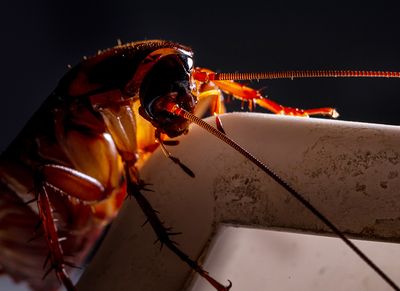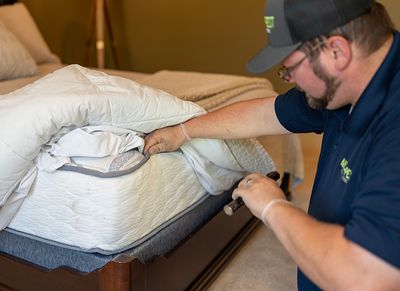What do carpenter bees look like?
These are large, fuzzy bees with yellow, orange, and black coloration. You may mistake a carpenter bee for a bumblebee because they can look similar depending on the carpenter bee species, but there is an easy way to tell them apart. Carpenter bees have no visible hairs on the abdomen. You may be able to notice this black, shiny, and visibly hairless abdomen from a distance. Remember that some species of carpenter bee have black hairs on the thorax, giving them an overall black appearance.
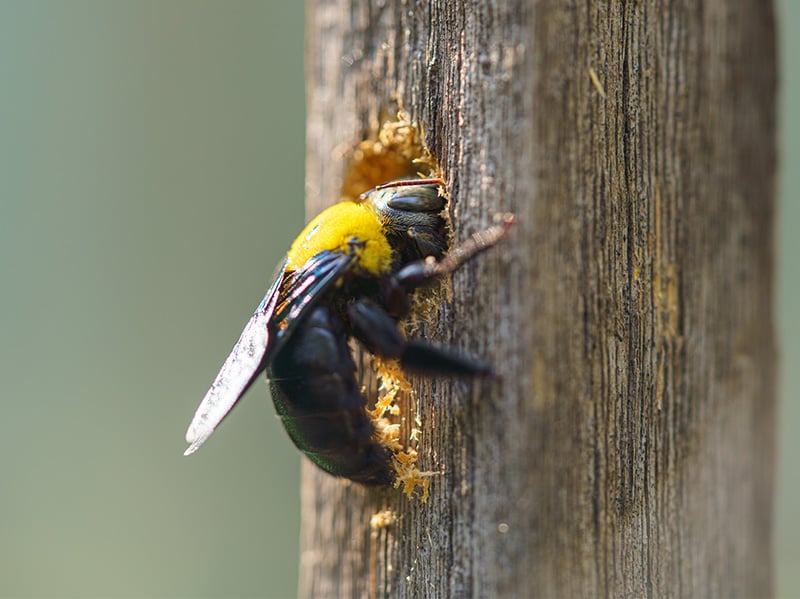
When are carpenter bees most active?
What do carpenter bees eat?
When you have trouble with carpenter bees, you'll notice tiny holes in the wood of structures on your property. Does that mean these bees eat wood? No. They tunnel in wood. Carpenter bees eat what all bees eat. They live on a diet of nectar and pollen. If you have flowering plants in your yard, you can expect to attract the attention of carpenter bees.
Do carpenter bees sting?
Yes, a carpenter bee can sting you, but there are a few facts you should know.
- Only the female bees sting.
- Male carpenter bees act aggressively, but they can't sting. So, when you see a carpenter bee coming after you, it is likely not a threat.
- Carpenter bees are solitary insects. They don't work together in a social group, so they don't swarm.
Carpenter bees get their pest status more from their ability to damage property, not their ability to sting.
Are carpenter bees harmful?
Just because a pest doesn't sting doesn't mean it is not harmful. Many pests cause harm without stinging or biting. Some spread harmful bacteria from unsanitary environments to kitchens and pantries. Some cause respiratory distress when they shed skin inside air ducts and other indoor spaces. Some cause holes that allow moisture into homes, leading to mold problems, which can impact health. Many pests leave their excrement indoors, which is a source of disease. Do carpenter bees do any of these things? Not really. They rarely find their way into indoor spaces. When they do, property owners call for professional help quickly.
Do I need to worry about carpenter bees?
The primary issue with carpenter bees is that they cause problems that go under your radar. They return year after year to enlarge existing tunnels or create new ones and cause more damage to fences, decks, porches, and other wooden structures. When you see these bees buzzing near your home, contact Anti-Pest for a pest inspection. We can find where (or if) they're nesting on your property.
Where do carpenter bees nest?
Unlike wasps and other stinging insects that build large nests in the ground or aerial nests, carpenter bees establish nests in wood structures outside of homes. Common nesting sites include:
- Fences
- Decks
- Porches
- Siding
- Shingles
They will also nest inside decaying wood, such as the branches of a dying tree.
Since carpenter bees go up and under, it is often difficult to see the holes they're creating. You need to get down low and look up. When you do this, look for perfectly circular holes. These bees make holes that look like someone took a large drill bit and bore it into the wood.
How many carpenter bees live in one hole?
One hole typically has one adult bee in it first: the female. She creates many cells within the tunnel she bores, and in each cell is a single egg. The eggs hatch and develop into adult bees within their cells. Once the bees mature into adults, a single nest can have around four females and twelve males. But these bees leave the nest, mate, and create new nests as soon as possible. They don't live together for long.
How do I get rid of carpenter bees?
Contact Anti-Pest today for help eliminating carpenter bees on your property. Our locally owned and family-operated pest control company has been helping property owners in Shreveport, Bossier City, and nearby areas solve carpenter bee problems since 1950. Our ongoing home pest control plan provides year-round protection for many pests, including carpenter bees. We also offer commercial pest control services that eliminate and prevent pest infestations.
How can I prevent a carpenter bee infestation?
You can take a few steps to deter carpenter bees, including but not limited to:
- Using pressure-treated wood for exterior structures.
- Painting or staining old and weathered wood to discourage females from creating tunnels.
- Replacing damaged siding, fence posts, and other wood.
- Use expanding foam to fill in gaps that give access to wood.
- Remove logs, branches, and other decaying wood sources from your yard.
To prevent issues with bees and other pests, contact Anti-Pest today!

Testimonials


Our Services

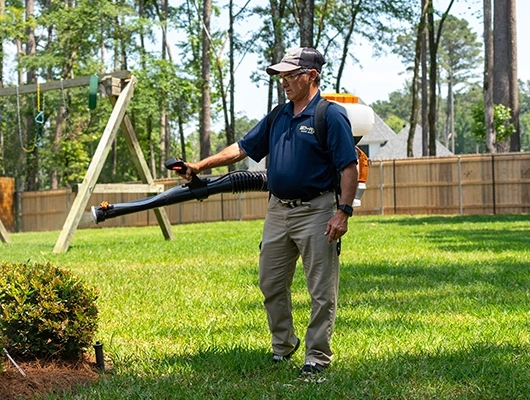
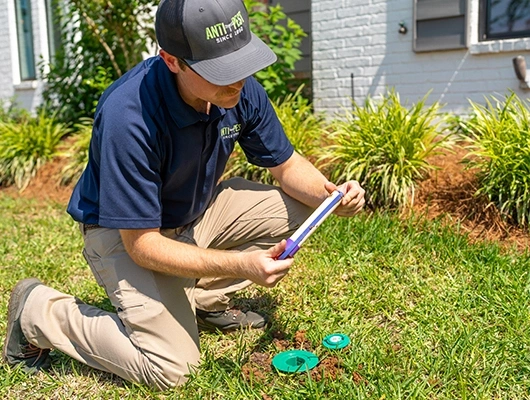

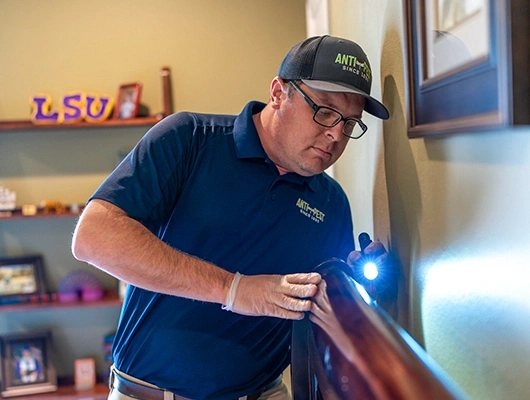
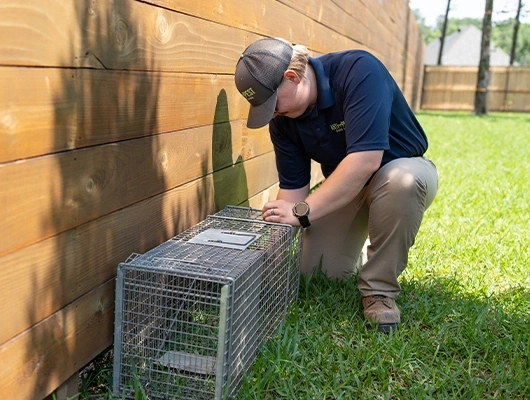
News, Blogs, & Articles
Anti-Pest Blog

